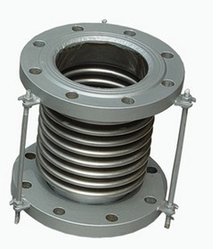gas butterfly valve
Understanding Gas Butterfly Valves An Integral Component in Fluid Control Systems
In the realm of industrial applications, gas butterfly valves play a crucial role in controlling the flow of gases through pipelines. Their design and functionality make them a preferred choice for many industries, including oil and gas, chemical manufacturing, and HVAC systems. This article delves into the significance, operation, and advantages of gas butterfly valves.
What are Gas Butterfly Valves?
Gas butterfly valves are quarter-turn valves with a disc-shaped element positioned in the center of the flow path. This disc, which resembles a butterfly, rotates to open or close the valve, allowing or stopping the flow of gas. Typically constructed from durable materials like stainless steel or brass, these valves are engineered to withstand high pressures and temperatures while minimizing resistance to flow.
How Do Gas Butterfly Valves Work?
The operation of a gas butterfly valve is relatively straightforward. When the valve lever or actuator is turned, the disc rotates around its axis. In the open position, the disc aligns parallel to the flow of gas, allowing for unobstructed passage. Conversely, when closed, the disc rotates to a perpendicular position, effectively sealing off the flow. This simple yet effective mechanism allows for rapid response times and efficient control of gas flow rates.
One of the critical components in the operation of a gas butterfly valve is its actuator. These can be manual, electric, or pneumatic, depending on the requirements of the system. Manual actuators are often used in smaller applications, while larger operations may employ electric or pneumatic actuators for automation and remote control.
Applications of Gas Butterfly Valves
gas butterfly valve

The versatility of gas butterfly valves makes them suitable for a wide range of applications. In the oil and gas industry, they are commonly used in gathering and distribution systems, where controlling the flow of gas is essential for safe and efficient operation. In chemical processing, these valves regulate the flow of reactive gases, ensuring that operations run smoothly without leaks or pressure loss.
In HVAC systems, gas butterfly valves are vital components in managing air flow and regulating temperature. Their lightweight design and ease of operation contribute to energy efficiency and overall system effectiveness. Furthermore, they are often employed in water treatment facilities to manage gas emissions and ensure environmental compliance.
Advantages of Gas Butterfly Valves
Gas butterfly valves offer several advantages that make them a favored choice in fluid control systems. One of the primary benefits is their compact design, which requires less space compared to other valve types. This feature is particularly advantageous in installations with limited space.
Additionally, gas butterfly valves provide quick operation due to their quarter-turn mechanism. This rapid opening and closing ability enhances system responsiveness, which is crucial in emergency situations where immediate shut-off is necessary. Furthermore, the low-pressure drop across a fully opened butterfly valve minimizes energy loss and improves overall system efficiency.
Another significant advantage is the ease of maintenance associated with gas butterfly valves. Their simple design means fewer parts that can fail, leading to lower maintenance costs and less downtime. Regular inspections and minor adjustments are usually sufficient to keep these valves functioning optimally.
Conclusion
In summary, gas butterfly valves are indispensable components in various industrial applications, providing reliable and efficient control of gas flow. Their straightforward design, rapid operation, and minimal maintenance requirements highlight their importance in ensuring the safe and effective functioning of fluid control systems. As industries continue to evolve, the role of gas butterfly valves is set to expand, solidifying their position as a key player in the field of valve technology. Whether in oil and gas, chemical processing, or HVAC systems, the implementation of gas butterfly valves underscores the commitment to operational efficiency and safety in fluid management.
-
Breakthrough in Domestic Low Temperature Valve Technology in ChinaNewsAug.18,2025
-
From Machinery to Intelligent Brain: The Digital Transformation Wave of the Valve IndustryNewsAug.18,2025
-
PCVEXPO 2025NewsAug.18,2025
-
The Key to Fluid Control: Exploring the Advantages of Ball Valves in Industrial SystemsNewsJul.09,2025
-
The Versatile World of 1, 2, and 3 Piece Ball ValvesNewsJul.09,2025
-
Stainless Steel Ball Valves: The Ideal Choice for Efficient Flow ControlNewsJul.09,2025
-
Optimizing Fluid Control with Ball Float ValvesNewsJul.09,2025




